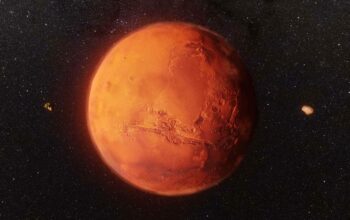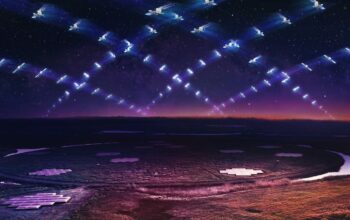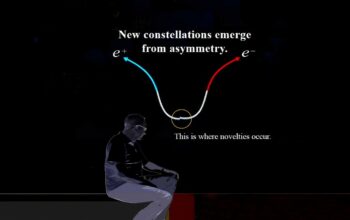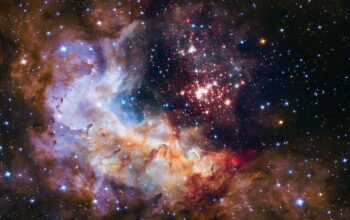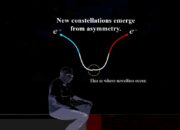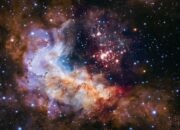The landscape of particle physics has long been characterized by the pursuit of understanding the universe’s fundamental constituents. Among these elusive entities, axion-like particles (ALPs) have emerged as subjects of increasing interest, especially in the context of dark matter research. The prospect of their existence tantalizes physicists, suggesting a resolution to some of the most persistent enigmas in contemporary theoretical frameworks. This article aims to explore the mounting evidence for axion-like particles, addressing both observational phenomena and theoretical motivations that render them a focus of fascination within the scientific community.
Historically, the search for dark matter—a substance that is hypothesized to comprise roughly 27% of the universe—has been plagued by an array of complexities. Traditional candidates, such as weakly interacting massive particles (WIMPs), have yet to yield empirical confirmation despite extensive experimental endeavors. Meanwhile, axions and their generalizations, the ALPs, propose a novel avenue. The theoretical framework that supports these particles is embedded in quantum chromodynamics (QCD) and derives from the need to resolve the strong CP problem. The axion was initially conceived as a mechanism to address the apparent violation of parity symmetry in strong interactions, and its theoretical properties naturally extend to similar pseudo-Goldstone bosons, which are now categorized as axion-like particles.
Recent observational data have increasingly suggested phenomena that are consistent with ALP existence, particularly in astrophysical contexts. For instance, the anomalous behavior of certain celestial bodies—such as the rotation curves of galaxies—has sparked discussions surrounding modified gravity theories and alternative dark matter candidates. The gravitational interactions displayed by visible matter appear insufficient to account for the rotational velocities observed in spiral galaxies. The deployment of the ALP framework offers a compelling hypothesis; the presence of an axion-like particle could infuse additional gravitational effects that align more closely with observed phenomena.
Furthermore, the detection of coherent structures in the cosmic microwave background (CMB) continues to unveil intriguing hints regarding the nature of dark matter. The CMB serves as a relic radiation field, imprinting signatures that encapsulate the universe’s evolutionary history. Investigations into the isotropy and homogeneity of the CMB have unveiled subtle anisotropies, which, while oftentimes attributed to cosmic inflation or baryonic acoustic oscillations, have also been posited to reflect interactions with ALPs. The coupling of these particles with photons may lead to observable patterns within the radiation, thus suggesting a new vector through which to investigate their characteristics.
In addition to astrophysical implications, laboratory-based searches for axions and ALPs have garnered considerable momentum. Experiments that utilize resonant cavities and magnetically sensitive detectors aim to demystify the properties of these elusive particles directly. Notably, the haloscope technique, which exploits the phenomenon of photon conversion in the presence of a strong magnetic field, has pioneered avenues to enhance detection methodologies. These efforts not only aim to confirm the existence of axion-like particles but also seek to delineate the critical parameters that would govern their interactions and properties.
One of the key characteristics of axion-like particles is their exceedingly light mass, coupled with an inherent tendency to exhibit long coherence lengths. This property invites potential connections to phenomena such as cosmic inflation and various grand unified theories. The speculative nature of ALP mass—often postulated to lie within the microelectronvolt to millielectronvolt range—enables a tantalizing exploration of their roles in cosmology and high-energy physics. As researchers meticulously scrutinize indirect signals within experimental data, they endeavor to ascertain the mass and coupling constants that define these particles.
Moreover, the investigation into ALPs opens pathways toward unifying disparate areas within physics, including particle, astrophysics, and cosmology. This cross-disciplinary approach not only strengthens theoretical models but also fosters an integrative narrative that encompasses diverse domains of inquiry. The concept of axion-like particles serves as a bridge, elucidating the deep connections between particle physics phenomena and cosmological observations—a synthesis that has eluded researchers for decades.
The burgeoning interest in axion-like particles heralds an era of renewed enthusiasm in the field of theoretical physics. The possibility of discovering such particles not only promises to invigorate discussions surrounding the nature of dark matter but also enhances the quest for a more comprehensive understanding of the interactions governing the universe. As empirical evidence coalesces, the scientific community becomes progressively optimistic about the prospects of unraveling the mysteries that have long shrouded particle physics.
In conclusion, the evidence for axion-like particles accumulates not merely through isolated observations but rather through a systematic interplay of theoretical propositions and empirical research. As dark matter’s elusive nature and other cosmological phenomena remain unresolved, ALPs provide a captivating potential solution. The allure that surrounds these particles lies not solely in their fundamental properties but also in their capacity to enrich our understanding of an intricate universe. The quest for axion-like particles thus stands at the confluence of numerous theoretical and observational streams, embodying a pivotal focus that is likely to dominate the discourse in particle physics for the foreseeable future.
